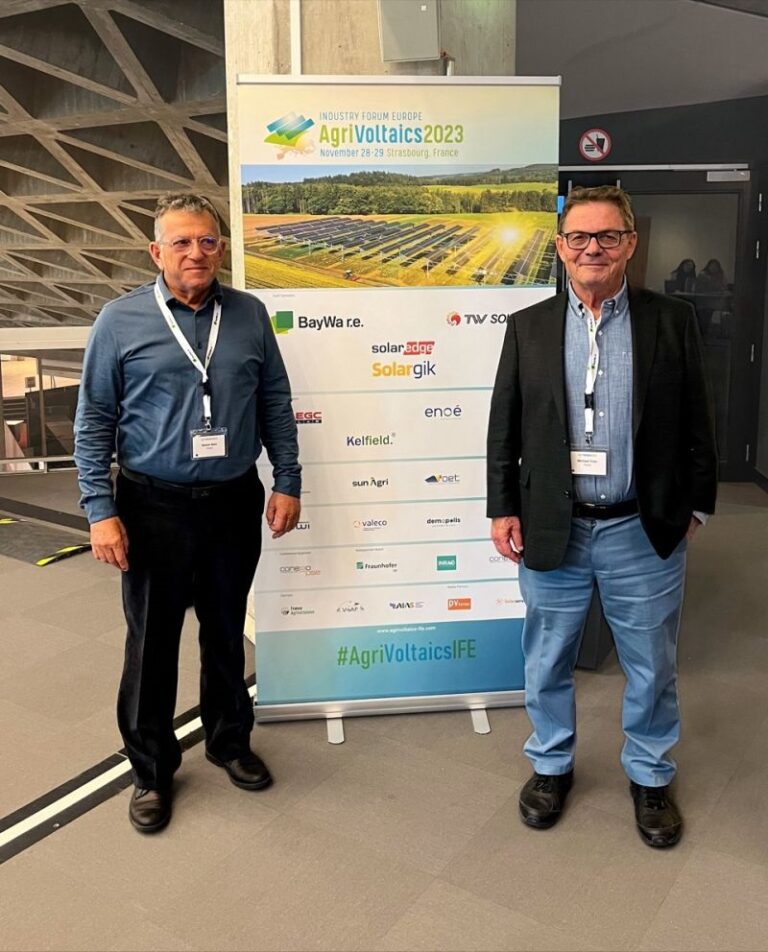Researchers of the EU-funded REGACE project published a scientific paper exploring how advanced artificial intelligence (AI) can help design and manage the greenhouses of the future.
The paper titled “Sustainable greenhouse microclimate modeling: A comparative analysis of recurrent and Graph Neural Networks”, was published in the journal Building and Environment by Emiliano Seri, Marcello Petitta, Chryssoula Papaioannou, Nikolaos Katsoulas and Cristina Cornaro from the University of Rome Tor Vergata, Roma Tre University, and the University of Thessaly.
Greenhouses are central to sustainable agriculture, allowing producers to grow more food using less land and fewer resources. When photovoltaic (PV) panels are added to greenhouses, food and renewable energy can be produced at the same time. At the same time, PV panels change the balance of light and heat inside the greenhouse. To keep crops healthy and maximize energy production, we need accurate, real-time models of the greenhouse microclimate.
In the paper the research team compared two types of AI models:
- Recurrent Neural Networks (RNNs): These models are very good at learning patterns over time. They are often used for weather forecasting or predicting energy demand.
- Spatio-Temporal Graph Neural Networks (STGNNs): These models are more advanced. Instead of just looking at patterns over time, they also understand how different factors (like light, humidity, and carbon dioxide) influence each other in connected ways.
The researchers tested both models on REGACE’s greenhouse data in Volos, Greece. One set of data came from 2020 and included four basic variables such as temperature, humidity, and solar radiation. A second dataset from 2024 was richer, adding new sensors that measured light for photosynthesis (PAR) and carbon dioxide.
The results were clear:
- In simple situations with only a few variables, the basic RNN was already very accurate.
- When more sensors were added, and the system became more complex, STGNN outperformed the RNN. In fact, it explained more than 90 percent of the temperature variations, compared to 74% for the RNN.
Compared to other machine learning methods, GNNs seems to better capture the intricate relationships and interactions among various physical variables. These findings can be turned into practical guidance for growers, technology providers, and greenhouse designers:
- If a greenhouse has only a few sensors, a simpler model may be enough.
- If a greenhouse invests in additional monitoring, such as CO2 or PAR sensors, using graph-based AI models could make a real difference in predicting and controlling the climate.
The study also highlights how these models can act as the “digital twin” of a greenhouse – a virtual copy that helps optimize both crop yield and energy generation in real time.
“The Tor Vergata research team with the key contribution of Emiliano Seri have successfully demonstrated how the use of Graph Neural Networks (GNNs) in highly complex systems such as an agrivoltaic greenhouse can enhance system modeling and lead to promising results,” commented Prof. Cornaro, coordinator of the research team of University of Rome Tor Vergata and leader of WP4 in the REGACE project, dedicated to modelling and digital twin. “This is a step forward in innovation for sustainable technologies.”
“By comparing different AI models for greenhouse climate prediction, we show how digital tools can support both crop productivity and renewable energy generation,” concludes Prof. Katsoulas, who provided the microclimate data of the greenhouse in Volos, Greece.
The results bring us closer to developing digital twins that will help make agrivoltaic greenhouses more efficient, sustainable, and resilient.



